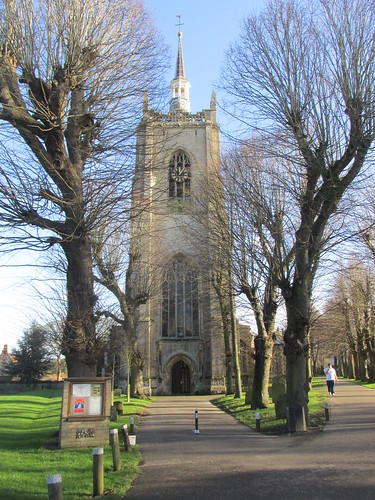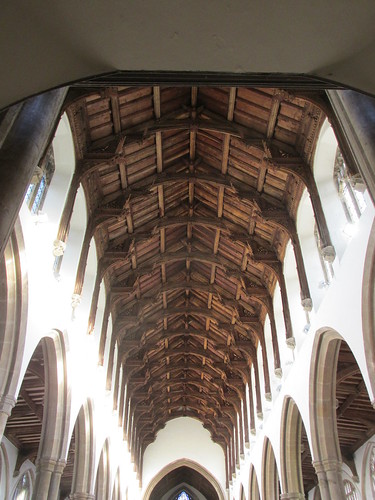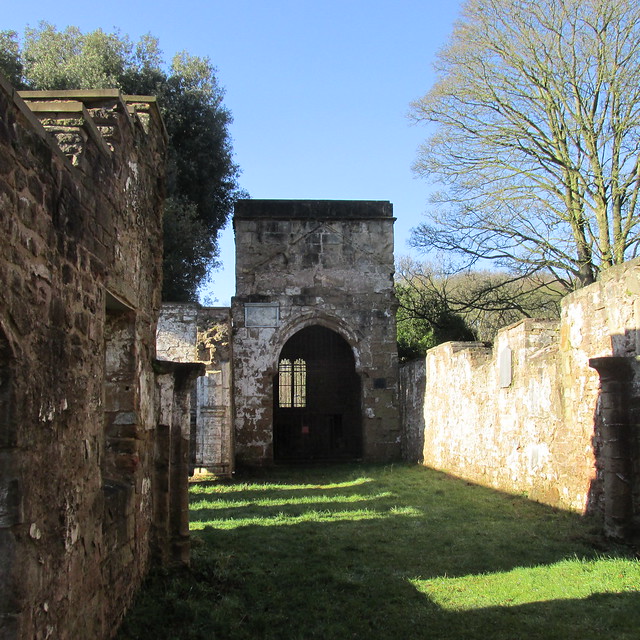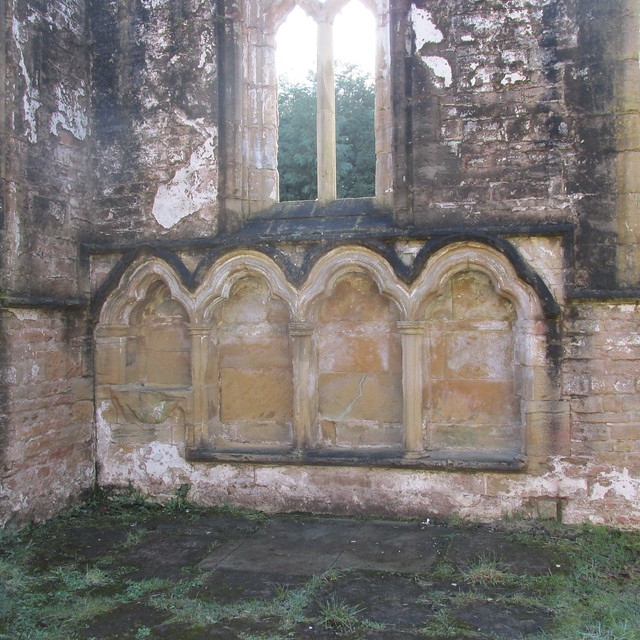Not far from junction 27 of the M1 you'll spot a ruined church surrounded by an abandoned burial ground. This is the 14th century Annesley Old Church, a Grade I listed scheduled ancient monument. There's not much of it left, but what remains shows just how fine the original must have been.
The church was built by the Annesley family in 1356 to replace a Norman chapel on the same site. It was in use for some services as late as the 1940s, although a parish church serving the nearby mining village of Annesley was constructed in 1874.
The church's state of repair meant it was listed on the Heritage At Risk register. It is currently owned by Ashfield District Council and a band of conservation supporters have launched a preservation project with the help of a £450,000 Heritage Lottery grant.
On the south wall is a triple sedilia (seats for use by the officiating priest and his assistants during communion services) and a piscina (shallow bowl used to wash communion vessels). The art historian Nikolaus Pevsner believed they predated the church and had been brought in from some other building.
There are also remains of a Norman arch from the original chapel and remnants of decorative nail head mouldings around the top of one of the pillars.
Both Byron and D H Lawrence (two local writers) mention the church. The estate passed by marriage to the Chaworth family in the 17th century. Byron and Mary Ann Chaworth were sweethearts and she is named in two of his poems.
Hills of Annesley, Bleak and Barren,
Where my thoughtless Childhood stray'd,
How the northern Tempests, warring,
Howl above thy tufted Shade.
Now no more, the Hours beguiling,
Former favourite Haunts I see,
Now no more my Mary smiling,
Makes ye seem a Heaven to Me.
Lawrence describes it in his 1911 novel The White Peacock.
The church is abandoned. as I grew near and owl floated softly out of the black tower. Grass overgrew the threshold. I punched open the door, grinding back a heap of fallen plaster and entered the place. In the twilight the pews were leaning in ghostly disorder, the prayer books dragged from their ledges, scattered on the floor in the dust and rubble, torn by mice and birds. Birds scuffled in the darkness of the roof.
Showing posts with label church. Show all posts
Showing posts with label church. Show all posts
Saturday, 12 March 2016
Wednesday, 6 January 2016
More Swaffham
 |
| Swaffham Church |
There has been a church on the site since the 12th century, but as the pedlar tale tells, it was rebuilt in 1454. It is acknowledged as one of the finest medieval churches in Norfolk.
The church is built from Barnack stone, a type of limestone quarried near Stamford in Lincolnshire.
 |
| The hammer beam roof |
The exterior of the church features a magnificent stone frieze with roundels, some containing the crossed keys of St Peter and others with the crossed swords of St Paul.
The tower, with its ring of eight bells, has a very impressive fleche (arrow) spire.
Subscribe to:
Posts (Atom)



